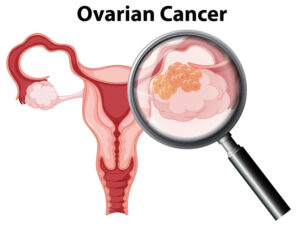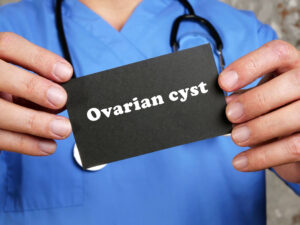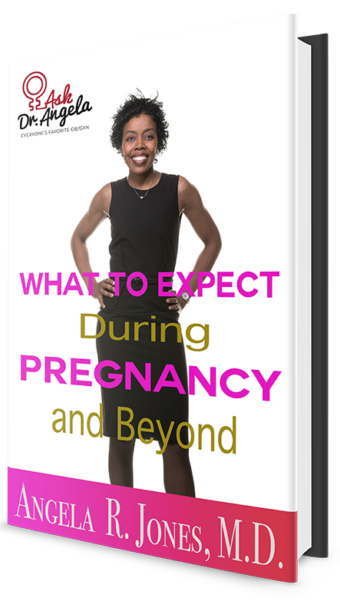Preeclampsia. My nemesis if you will. Always rearing its ugly face both expected and unexpectedly. Honestly, there is always someone on labor and delivery with preeclampsia. It’s like a box of chocolates; you’re never sure how it’s going to present; but trust me, you usually won’t like the surprises that can be associated with it.
And just like that (a nod to SJP revamp of Sex and the City which I AM NOT so thrilled with but more on that later), you can have it!
Hypertensive disorders in pregnancy are one of the leading causes of maternal and perinatal death worldwide; preeclampsia falls under the umbrella of hypertensive disorders.
Preeclampsia is a potentially life-threatening complication of pregnancy characterized by new-onset high blood pressure after 20 weeks gestation and frequently near term.
Although often accompanied by the presence of protein in the urine, hypertension and other signs/symptoms of preeclampsia can present in some women without proteinuria. Left untreated, it can lead to seizures, stroke, and even death.
Though it can occur at any time during pregnancy after the 20th week of gestation, preeclampsia is most common in the third trimester.
If you experience any unusual symptoms – such as headache, blurred vision, abdominal pain; specifically right upper quadrant pain, see your doctor right away. Early diagnosis and treatment are essential for preventing serious complications.
I hope that by reading this post, you will have a better understanding of preeclampsia and feel more comfortable talking to your doctor about it. In addition to spreading holiday cheer, I’m hoping this blog post will serve to enlighten you on those things most relevant to preeclampsia; specifically, diagnosis, associated signs and symptoms, risk factors, and treatment.
What is preeclampsia
Preeclampsia is a condition that is diagnosed during pregnancy after the 20th week. It’s marked by high blood pressure and may be associated with the presence of protein in the urine. Left untreated, preeclampsia can lead to serious health problems for both mother and baby.
Preeclampsia falls under the umbrella of hypertensive disorders of pregnancy, which is the leading cause of death worldwide for pregnant women.
Preeclampsia affects 5-8% of pregnancies in the United States, and globally it is estimated that preeclampsia affects 2 million pregnancies each year.
Preeclampsia is often characterized by high blood pressure, which may be associated with protein in the urine, and abnormal kidney or liver function.
Left untreated preeclampsia can become severe very quickly, progressing from mild to severe within hours of diagnosis.
Eclampsia or seizures associated with severe preeclampsia, are different than typical seizures. This kind of seizure occurs when there is a severe disturbance in the brain.
Eclampsia can occur before, during, or after labor. About 1 in 5 women with preeclampsia will experience eclampsia. Of note, a significant number of women, 20-38%, will not experience the classic signs of preeclampsia (high blood pressure or protein in the urine) prior to an eclamptic episode.
Additionally, preeclampsia is one of the leading causes of indicated preterm delivery. It can alter the child’s physiology, including growth restriction, blood pressure issues, and it has been linked to coronary artery disease later in life
According to recent studies, though preeclampsia rates have declined globally over the last several decades, the United States seems to buck this trend; most notably in the African-American community.
The American College of Obstetricians and Gynecologists (ACOG) has released a report that states preeclampsia rates in the United States have increased by 26% in the last ten years. In 2010, preeclampsia affected 9% of pregnant women in the United States, compared to only 7% in 2000.
ACOG has several theories why preeclampsia rates may be on the rise. One theory is that obesity might be a factor. The number of obese women in the United States has increased dramatically in recent years, and obesity is a risk factor for preeclampsia.
Another theory questions whether pregnancy management in the United States is leading to the increased rates of preeclampsia.
Whatever the reason for the increase in preeclampsia rates, pregnant women need to be aware of the risk factors and symptoms of preeclampsia. If you think you might have preeclampsia, notify your doctor immediately. Treatment for preeclampsia is available, but it is important to get treatment as soon as possible.
Preeclampsia vs eclampsia
Eclampsia happens in about 1 out of every 1,000 pregnancies. Sometimes preeclampsia progresses into eclampsia. Eclampsia is the development of seizures in a woman who has preeclampsia.
Eclamptic seizures can cause a pregnant woman’s blood pressure to go so high that the brain begins to bleed and she dies before doctors have time to save her.
Signs and symptoms of Preeclampsia

Preeclampsia may develop without any symptoms. Routine visits to your ob-gyn will aid in prompt diagnosis.
Monitoring your blood pressure is an important part of prenatal care because the first sign of preeclampsia is commonly a rise in blood pressure. High blood pressure may develop slowly, or it may have a sudden onset.
Signs and symptoms of preeclampsia may include:
- Severe headaches
- Shortness of breath caused by fluids in the lungs
- Nausea or vomiting
- Peeing less or not at all
- Changes in vision such as temporary loss of vision, blurry vision, or sensitivity to light
- Abdominal pain, usually under your ribs on the upper right side
- Abnormal liver function
- Abnormal kidney function
- Excess protein in the urine
- Decreased levels of platelets in your blood (thrombocytopenia)
What causes Preeclampsia
The cause of preeclampsia is not known. However, it is thought to be related to problems with the placenta, the organ that links the mother’s blood supply with her baby’s.
When a woman gets pregnant, new blood vessels develop to send blood to the placenta. For women with preeclampsia, these blood vessels are narrower than usual, and hence, limit blood flow.
Why the blood vessels may develop abnormally, no one knows for sure. But experts suggest the following could be the reasons:
- Damage to the blood vessels
- Insufficient blood flow to the uterus
- Genetics
- Problems with the immune system
Experts are also of the opinion that obesity and poor nutrition may be risk factors.
Other high blood pressure disorders during pregnancy
Aside from preeclampsia, hypertensive disorders during pregnancy include:
Gestational hypertension. This is hypertension that occurs after the 20th week of gestation. Women with gestational hypertension don’t have protein in their urine, and it usually goes away after birth.
Chronic hypertension. Hypertension that exists prior to pregnancy or before 20 weeks gestation.
Chronic hypertension with superimposed preeclampsia. Chronic hypertension during pregnancy that is worsening as suggested by increasing protein in the urine or the development of other health complications.
Preeclampsia risk factors

Risk factors for preeclampsia include:
- Having high blood pressure before getting pregnant
- Being over age 35
- Being obese (Prepregnancy body mass index greater than 30)
- Having a history of preeclampsia or gestational hypertension
- Having diabetes or chronic kidney disease
- Thrombophilia
- Antiphospholipid antibody syndrome (APS). An autoimmune disorder that that causes an increased risk of blood clots
- Systemic lupus erythematosus (SLE). An autoimmune disease in which the immune system attacks its own tissues
- Being African American
- Having babies less than 2 years apart or more than 10 years apart
- Carrying twins or multiple babies in a pregnancy
- Assisted reproductive technology (Such as In vitro fertilization)
- First pregnancy
- Obstructive sleep apnea
- Smoking
Preeclampsia complications
In some cases, preeclampsia can lead to serious complications. One major complication is HELLP syndrome.
HELLP syndrome
This is a life-threatening condition that affects the liver and blood cells.
HELLP stands for:
Hemolysis. This is when the red blood cells that carry oxygen through your body break down.
Elevated liver enzymes. High levels of these chemicals in your blood mean liver problems.
Low platelet counts. This is when you don’t have enough platelets, so your blood doesn’t clot the way it should.
If you’re experiencing the following symptoms, it might be HELLP, see your doctor immediately.
- Headache
- Blurry vision
- Fatigue
- Chest or belly pain
- Upset stomach or vomiting
- Bleeding from your gums or nose
Other preeclampsia complications include
- Eclampsia. A condition that causes seizures and can lead to coma or death
- Placental abruption. A condition in which the placenta separates from the wall of the uterus prematurely. This can lead to stillbirth
- Stroke
- Fluid buildup in your chest (pulmonary edema)
- Bleeding from your liver
- Reversible blindness
- Preeclampsia-related death
Preeclampsia diagnosis
If you have any signs or symptoms of preeclampsia, see your doctor right away. Your doctor will confirm the diagnosis by measuring blood pressure.
According to ACOG, the following are the diagnostic criteria for preeclampsia.
Blood pressure
Systolic blood pressure of 140 mm Hg or more or diastolic blood pressure of 90 mm Hg or more on two occasions at least 4 hours apart after 20 weeks of gestation in a woman with a previously normal blood pressure
Systolic blood pressure of 160 mm Hg or more or diastolic blood pressure of 110 mm Hg or more. (Severe hypertension can be confirmed within a short interval (minutes) to facilitate timely antihypertensive therapy).
and
Proteinuria
300 mg or more per 24-hour urine collection (or this amount extrapolated from a timed collection) or
Protein/creatinine ratio of 0.3 mg/dL or more or
Dipstick reading of 2+ (used only if other quantitative methods not available)
Or in the absence of proteinuria, new-onset hypertension with the new onset of any of the following:
Thrombocytopenia: Platelet count less than 100,000 × 10 9/L
Renal insufficiency: Serum creatinine concentrations greater than 1.1 mg/dL or a doubling of the serum creatinine concentration in the absence of other renal diseases
Impaired liver function: Elevated blood concentrations of liver transaminases to twice normal concentration
Pulmonary edema
New-onset headache unresponsive to medication and not accounted for by alternative diagnoses or visual symptoms
In some cases, additional tests may be needed to rule out preeclampsia-related conditions, such as HELLP syndrome, placental abruption, preeclampsia-related stroke, or preeclampsia after birth.
Preeclampsia treatment
Treatment focuses on keeping the mother and baby healthy by preventing preeclampsia-related complications. Treatment for preeclampsia is delivery.
Depending on your presentation at the time of diagnosis, your doctor may recommend different treatment plans.
For diagnosis at 37 weeks or beyond, preeclampsia will be treated with delivery. However, the delivery route (whether by induction or cesarean section) depends on the severity of the preeclampsia and the condition of the mother and baby.
For mild preeclampsia, your doctor may want you to still carry the pregnancy particularly when you’re not close to your due date. You may need to spend some time in the hospital.
Your health care provider will monitor you closely for signs of preeclampsia that can lead to serious complications if not treated promptly. Medications will be given to control blood pressure and decrease the risk of developing eclampsia.
In other cases, however, premature delivery (before week 37) may be necessary. Your symptoms should go away 1- 6 weeks afterward.
How to prevent preeclampsia

There is no sure way to prevent preeclampsia. However, some preventative measures that may reduce the risk of developing preeclampsia include:
- Having regular prenatal checkups
- Keeping your blood pressure under control
- Avoiding smoking and secondhand smoke
- Avoiding alcohol and caffeine
- Eating a healthy diet
- Getting enough exercise
- Keeping a healthy weight
- Take medications prescribed by your doctor.
In women with a history of preeclampsia or with multiple risk factors for preeclampsia, a daily aspirin, 81mg, is often recommended after 12 weeks gestation.
Don’t take medications or supplements unless you have consulted your doctor.
Preeclampsia after birth
Most cases of preeclampsia occur during pregnancy, but in a small number of cases, preeclampsia develops after childbirth.
Postpartum preeclampsia typically occurs within 4 weeks of giving birth and is marked by high blood pressure and other symptoms of preeclampsia.
The typical symptoms of preeclampsia can be present including severe headaches, blurry vision, shortness of breath, etc.
Post-partum preeclampsia treatment may include readmission to the hospital and administration of a variety of medications that will reduce symptoms and the development of eclampsia.
Conclusion
Hoping this blog post has enlightened you. Preeclampsia; never the usual suspect. I’ve seen it present in the most unusual fashions which is why a high index of suspicion is paramount.
If you have had it in the past, your ob-gyn will take measures to help reduce it in upcoming/current pregnancies. If you are currently pregnant and not quite feeling yourself, please touch base with your ob-gyn.
Remember, in my favorite GI Joe voice, “knowing is half the battle.”
Have questions? Leave them in the comments below. I’m sure quite a few of you have either personally had an experience with preeclampsia or know someone who has. I’d love to hear about it. Remember, we are our sister’s keepers. Feel free to share this blog post and pass the knowledge along.
Until next time,
Choose happiness.
Dr. Angela.










